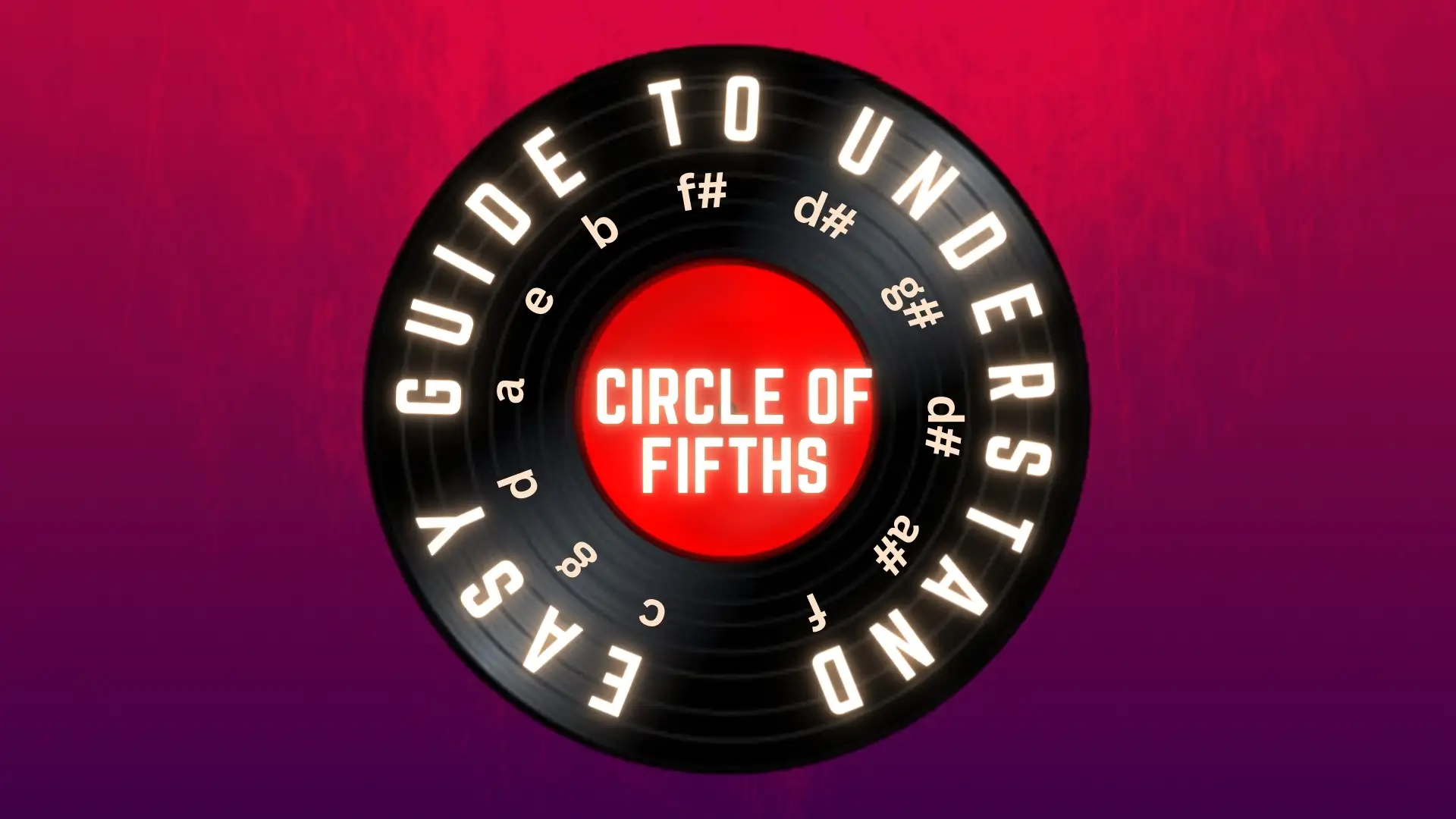Understanding Circle of Fifths has really been one of the tricky tasks for me. It is the most helpful tool to place major and minor keys in our minds. It is like an image that helps us picture the 12 chromatic keys in western music theory. Tricky yet worth your Attention!. Now lets understand in detail with this easy guide to understand Circle of Fifths.
What is the Circle of Fifths?
Circle fifths is a pictorial representation of Major and Minor Keys in a circle. Basically the major keys are in the inner circle and the minor keys are in a sort of the outer circle. It helps you understand how major keys and the natural minor keys are organized and associated together. Here is an easy guide to understand Circle of Fifths.
Why Is It Called The Circle of Fifths?
It is called the Circle of Fifths because each key is written exactly 5 notes (intervals of fifth) ) away from the next key on the circle. We can look into this a little later.
Here is an Idea! Take a quick look at your keyboard.
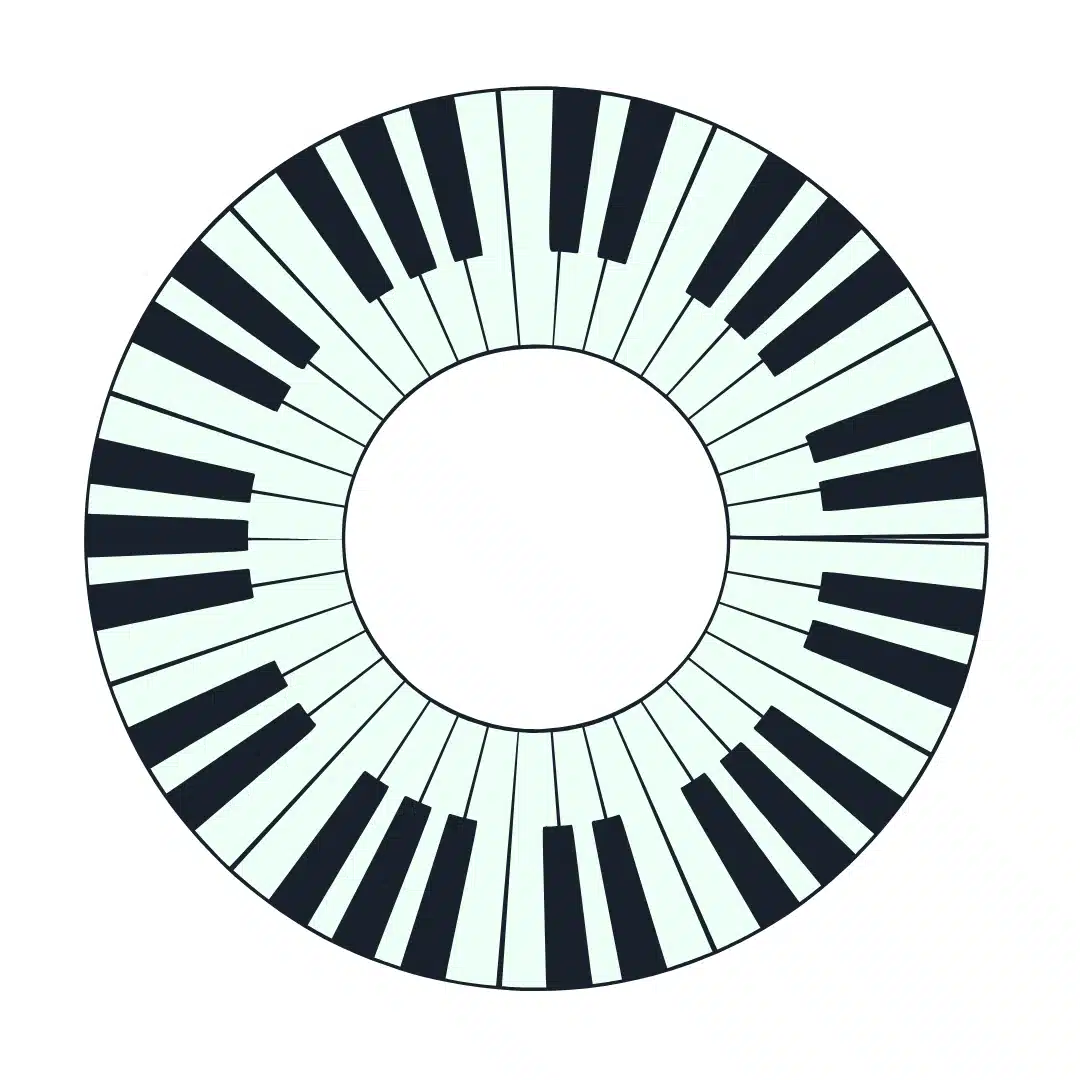
Same key different names?
So we know that there are white keys and black keys. Look at the C#. C# is a semitone higher to C and so we call it C#. C# is also a semitone lower than D. Then it would be Db. These keys are called Enharmonics.
Enharmonics are the keys that are identical in pitch or sound to another key but have a different name. Musical notes, scales, intervals, chords that are identical in pitch are also called Enharmonics.
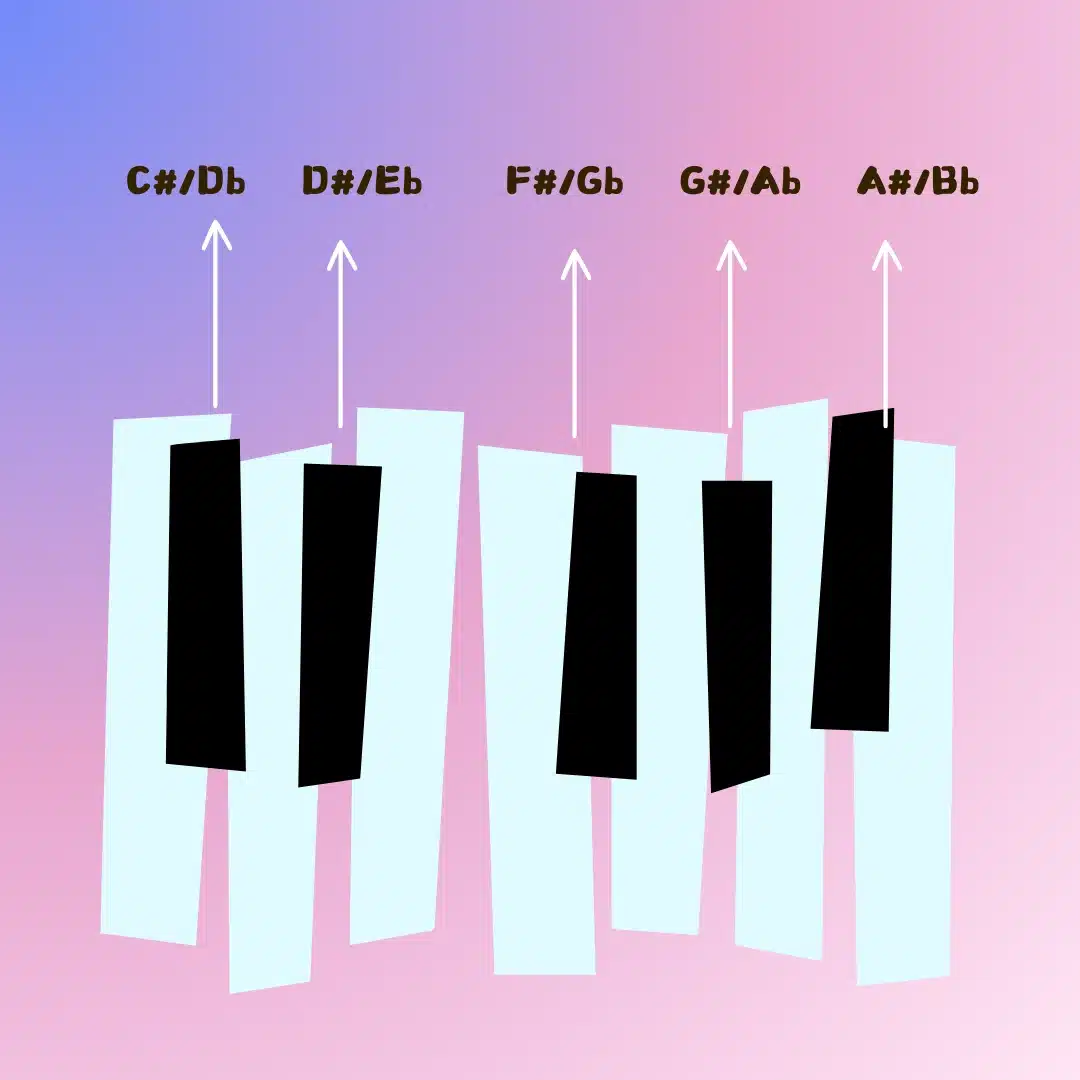
In this way D# is also Eb. F# is also Gb. G# is also Ab. A# is also Bb.
Also look at the full keyboard of fifths. Each octave will have these 12 notes(incl. Sharps and flats)
C, C#, D, D#, E, F, F#, G, G#, A, A#, B, C.
Note down all the enharmonics from higher octaves to the lower octave for your understanding.
The Idea of Fifths
There happens to be a pattern of going in ascending order in the interval of fifths. As we go higher the number of sharps increases for each key.
In the descending order of notes in Interval of Fifths, the number of flats increases.
This is how the Circle of Fifths is formed.
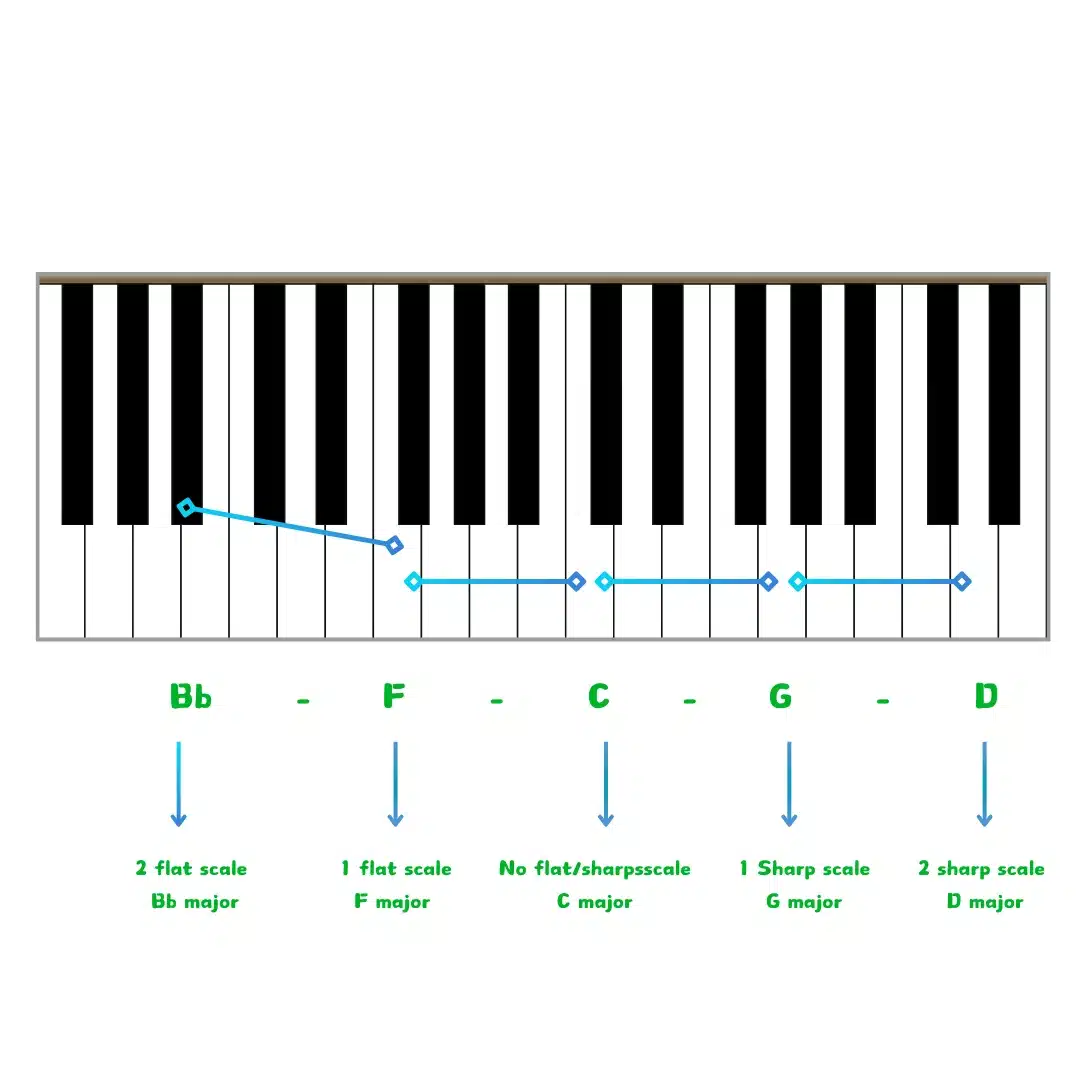
Each major key in the Circle of Fifths has a relative minor key, which we will look into in a bit.

Did You Know?
You should revisit the intervals lesson to understand the circle of fifths better.
Notice that as we go higher on a keyboard in fifths, the number of sharps increases and as we go lower, the number of flats increases. Remember this no matter what, you can easily form the major scales part of the Circle of Fifths.
What is a key signature?
In Music theory, the arrangement of flats and sharps on the staff is called a Key Signature. This lets us find out which key that particular piece of music is set in. These flats and sharps are written on the lines and spaces of that staff.
Key signatures can be seen at the left corner in the beginning of the staff right next to the clef. In the Circle of Fifths, you can find the key signature outside the circle.
What is Relative Minor?
Relative minor of a major scale is the scale that starts on the 6th degree of that major scale. These minor scales are natural minor scales and have the same key signatures as the major scales.

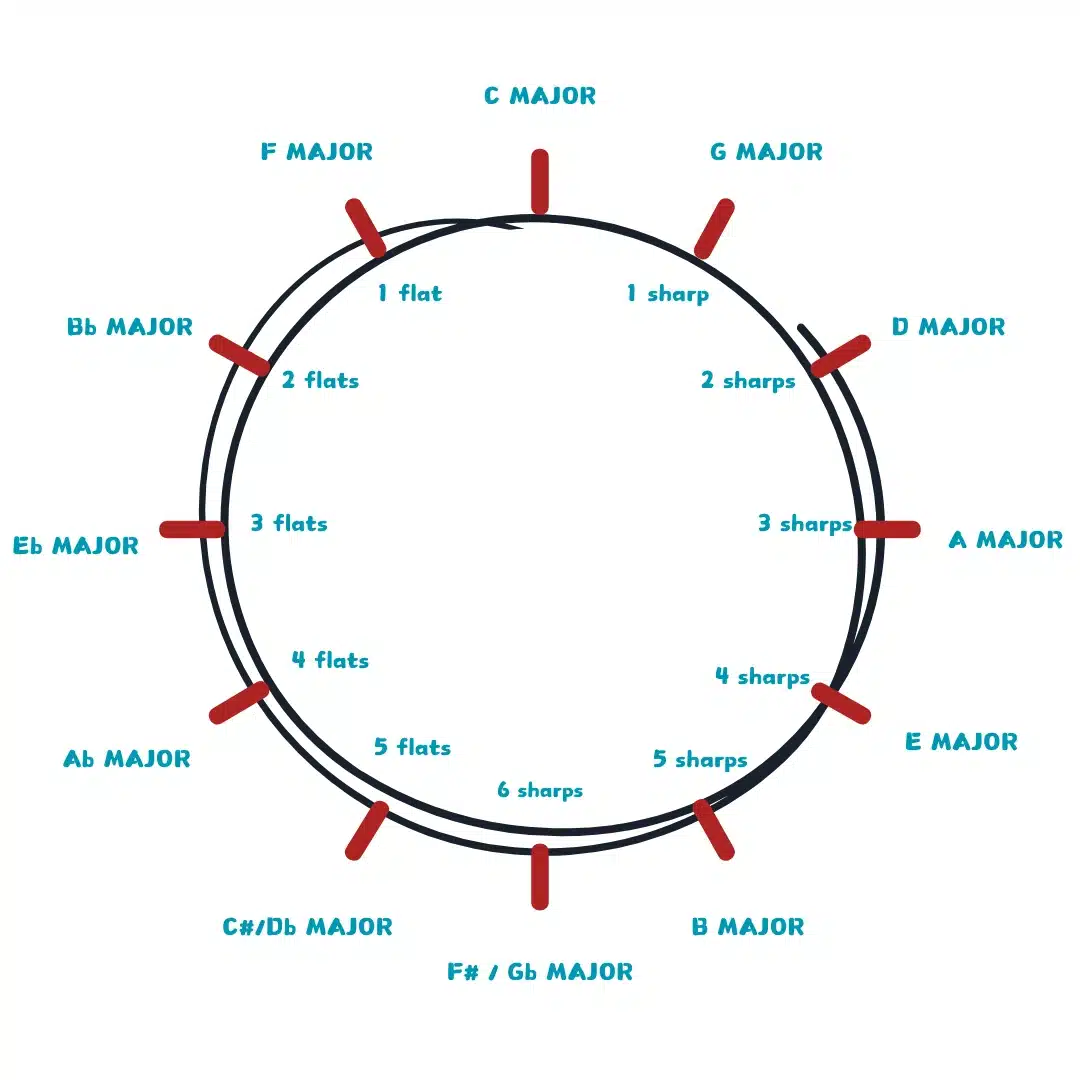
So,to write the relative minor of a major key, just count up to six scale degrees using the key signature of the major key.
To get the relative minor of a major key, all you need to do is count up to six scale degrees using the key signature of the major key.
Think of C major scale it has no sharps and flats.
C,D,E,F,G,A,B,C are the notes of C Major scale. The sixth degree of the scale is A and so the relative minor of the C major is A minor. A,B,C,D,E,F,G,A are the notes of the A Minor scale. it also does not have any sharp or flats in it.
D,E,F#,G,A,B,C#,D are the notes of D Major scale. The sixth degree of the scale is B and so the relative minor of the D major is B minor. F# and C# are the two sharps used in D major scale. B,C#,D,E,F#,G,A,B are the notes of B minor scale. This means that B minor also has 2 sharps.
Go ahead and check for the rest keys.
How does Circle of Fifths actually work?
A simple explanation of Circle of Fifths can be “it is like a road map to finding major or minor keys. Let us work the right side of the circle. The key signatures are found outside the circle. We have major keys and their relative minors on the other side of the circle.
Sharp Keys- The right side of the circle
Now we know C major has no flat or sharp and its relative minor is the 6th degree from C. So that’s A minor which also has no flats or sharps.
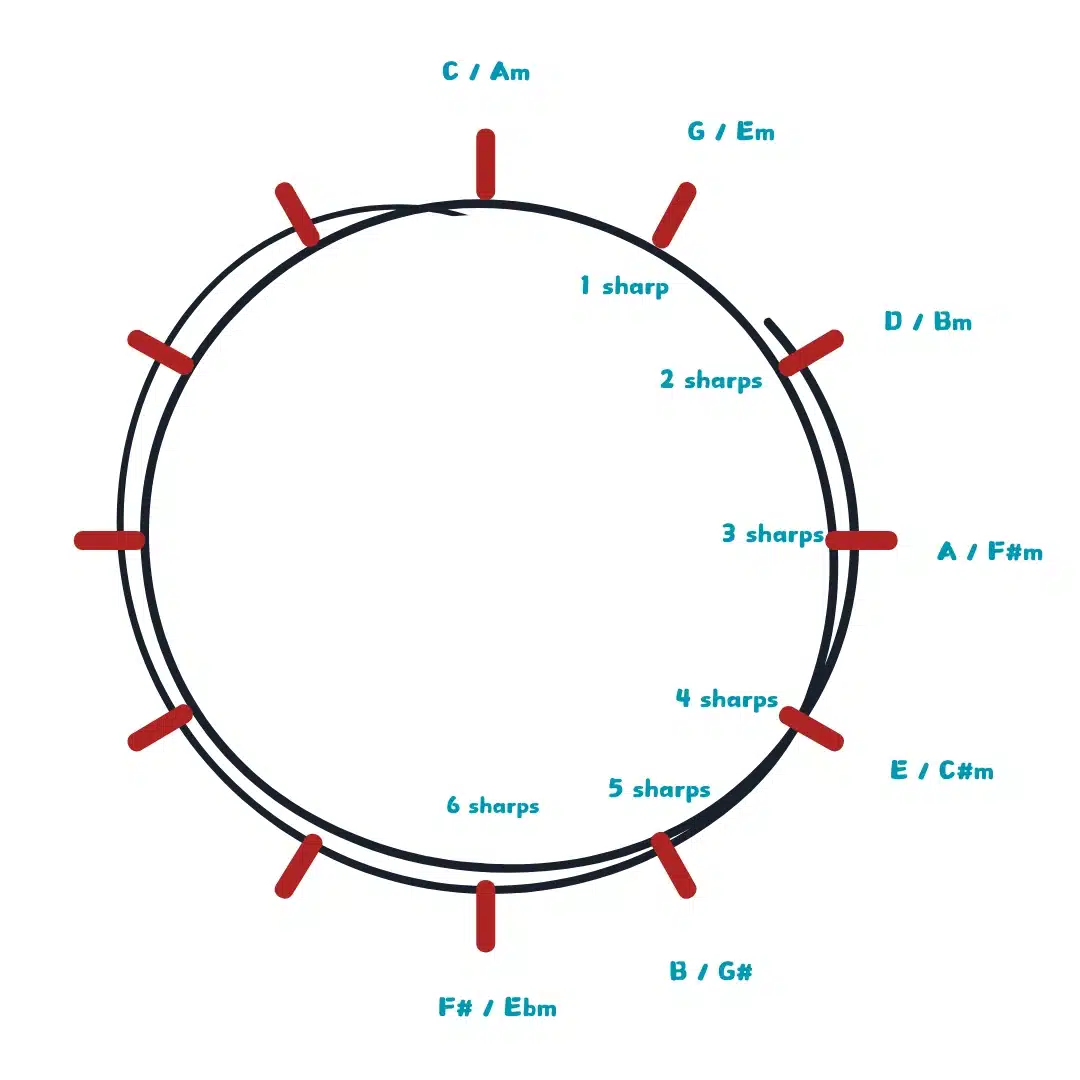
Next up is G major key and it has one accidental i.e.,F#. A sharp is being added with each step as you proceed around the circle, clockwise by fifth intervals
There is a small trick to remember the order. I use this mnemonic- Candy Gets Drunk And Eats Big Fries.
How would one determine which sharp to add?
That is a good question!. Although most musicians use a mnemonic. The sharps are in the same order and begin one step to the left of C major.
So my teacher taught me this.
Four Chinese Guys Dining At Eight.
You can find all the keys with sharps in their key signature by moving by fifths and adding a sharp each time. The most number of sharps in a key signature is seven in C# major!
Flat keys- the left side of the circle
You’ll begin in the same place at C major to locate the keys with flats on the Circle of Fifths, but you’ll go counterclockwise. This time, add a flat to each step and descend by a fifth.
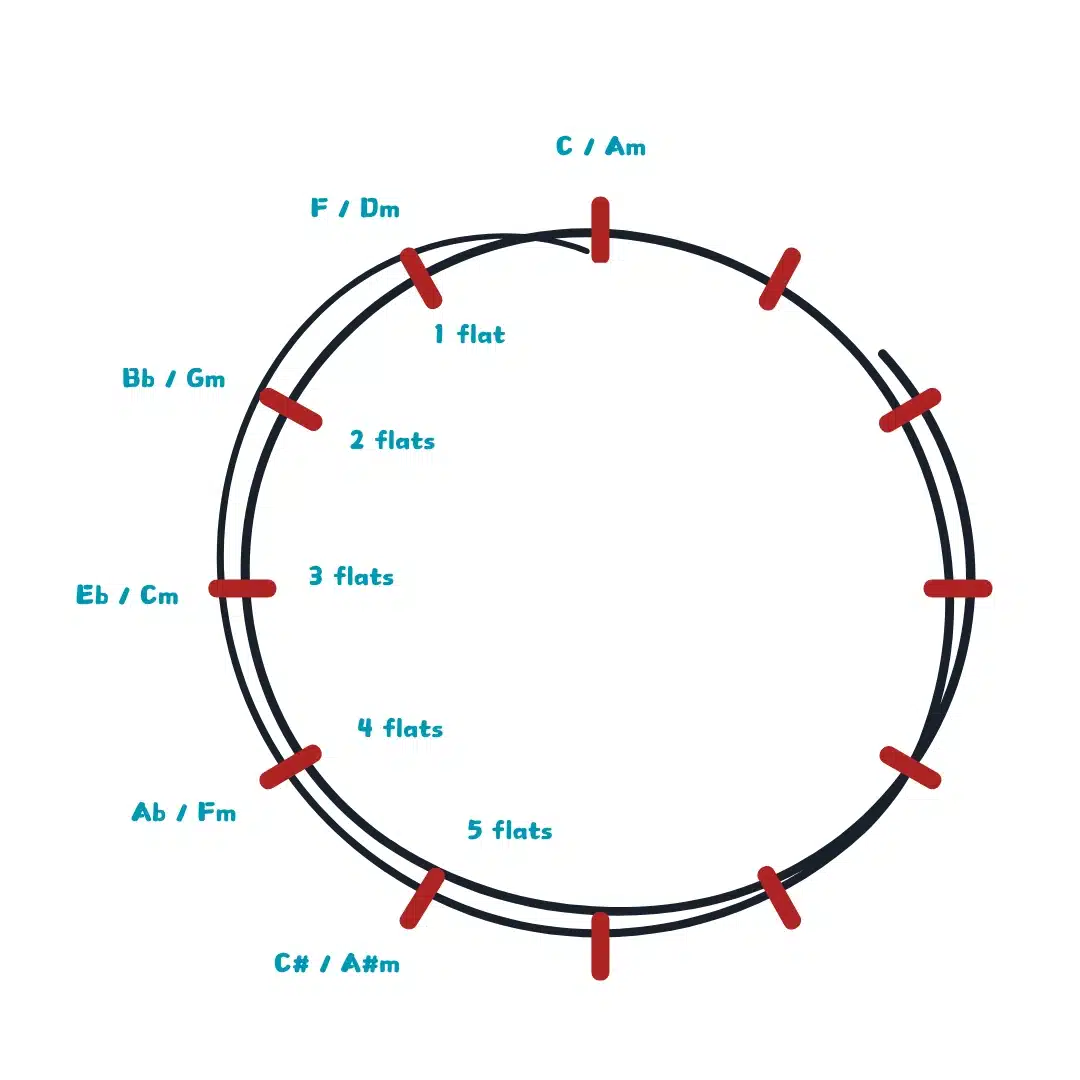
Adding two flats to the key signature (Bb and Eb) in our example will need you to take two steps to the left in order to locate Bb. This is how you can get all the way up to Cb major, which has seven flats.
Remember this:
Caroline Flondles BEAD
(add flats to the letters of the word bead)
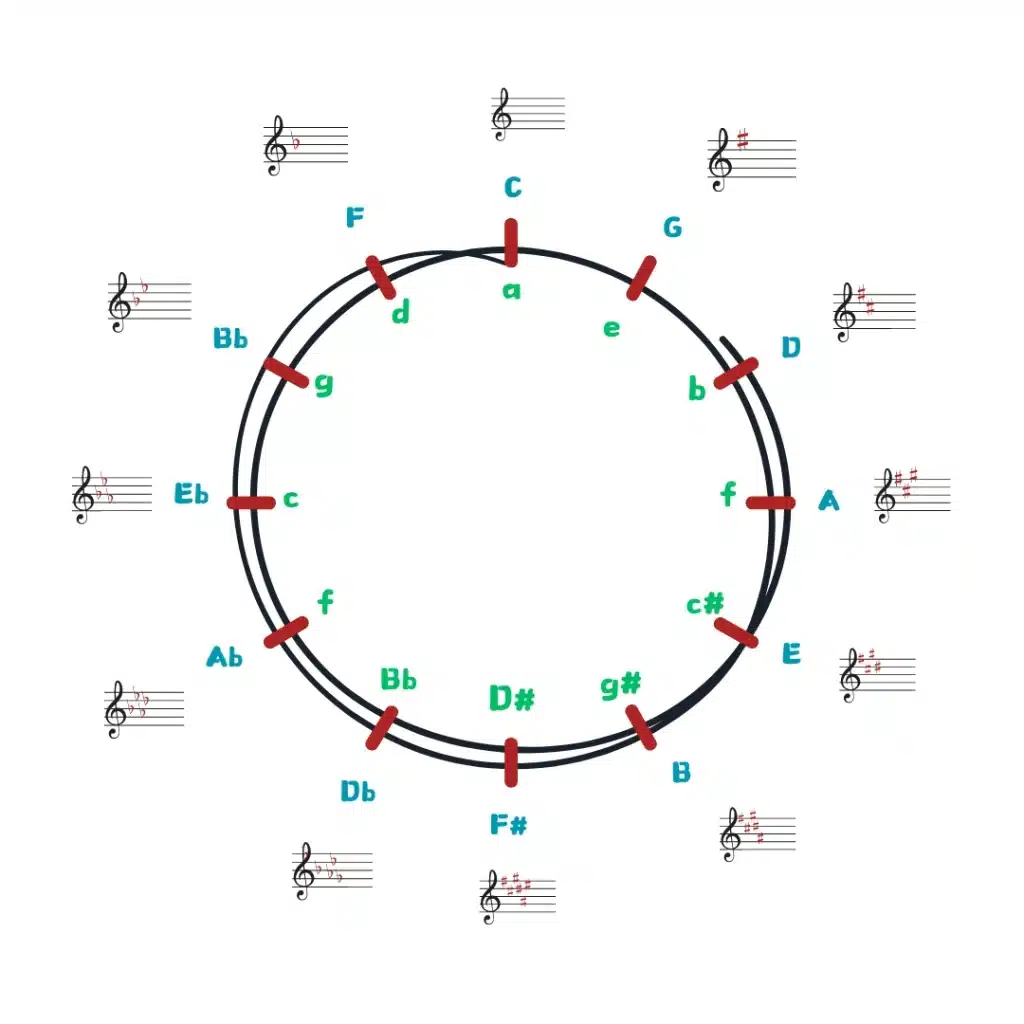
There, we have now formed the Circle of Fifths.
Why is the Circle of Fifths so important?
Basically, the circle of fifths is a helpful resource for beginners attempting to get familiar with various key signatures. It makes it simple to determine how many flats or sharps are in each key and how various keys relate to one another.

Did You Know?
There are illustrations of Circle Of Fifths in the music theory in the early 17th Century.
Anyway, the circle is really useful in the context of music composition, it helps in writing chords, to change or transpose keys. It also comes handy while jamming, you know, to quickly where everyone is at.
Closing thoughts
There are many approaches to learning the Circle of Fifths. Some can be confusing and I hope our easy guide to understand Circle of Fifths gives you a some sort of understanding in this topic. I remember my first ever tutor teaching me circle of fifths when I was 13 years old. It is always straightforward when we have someone to explain tricky concepts. Wait no more and book a free demo with us today.
FAQs
What are the major and minor keys on the circle of fifths?
Circle of fifths has all the 12 major and minor keys.
What are the sharp and flat keys on the circle of fifths?
B Major/Cb Major, F# Major/Gb Major, and C# Major/Db Major are the sharp and flat keys on the circle of fifths.
How can I use the circle of fifths to learn new scales and chords?
Circle of Fifths helps in writing chords, to change or transpose keys since it has information about notes in each scale.
How does the Circle of Fifths contribute to improvisation and understanding the relationships between major and minor keys in musical compositions?
Circle of Fifths helps in getting interesting chords, to change or transpose keys, write a melody by understanding the relationships between major and minor keys in musical compositions.

